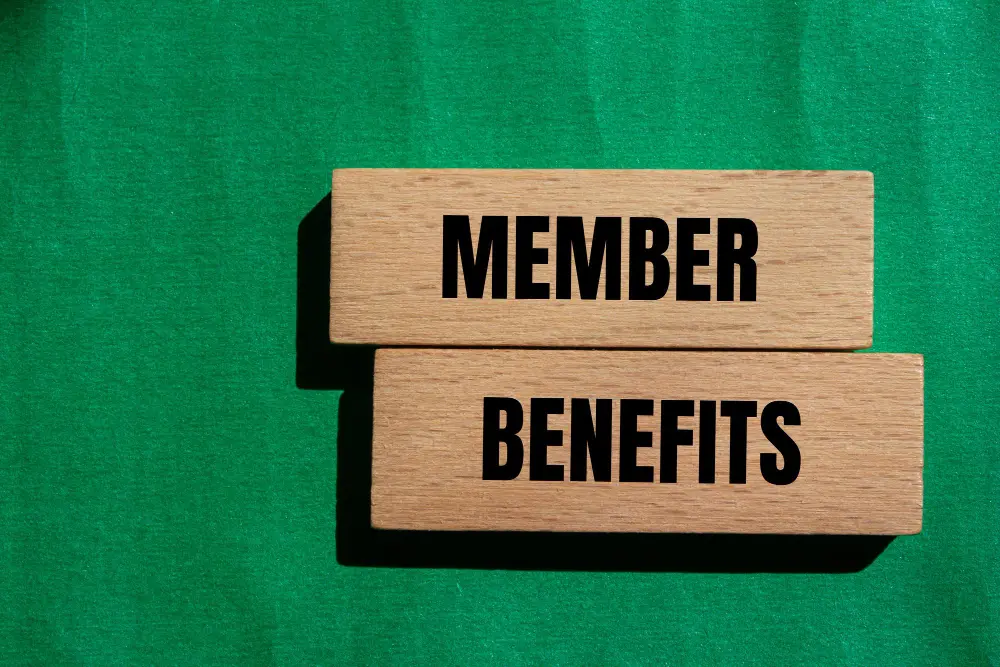
What is Membership Management? Meaning, Benefits & Examples
In this article, we’ll explore what membership management means, highlight its benefits, and share real-world examples. Whether you’re running a student club, a community center, or a national association, understanding the ins and outs of managing memberships is essential for building strong and sustainable programs.
Key Topics You’ll Learn
- What is membership management
- What makes a membership advantage truly valuable
- Examples of benefits that improve retention and engagement
- How to structure and scale perks by plan type
- Answers to common questions about setting up and tracking perks
Let’s dive in!
I. What is Membership Management?
Membership management means strategically planning, organizing, and maintaining the relationship between an organization and its members. Therefore, it covers every stage, from designing membership plans and collecting dues, to applying benefits across events and activities, and tracking renewals.
By focusing on membership management, organizations create a sense of belonging for each member while also meeting their own financial and operational goals. Here’s a closer look at the multifaceted world of memberships management:
1. Membership Plans and Perks
The foundation of membership management is designing clear tiers, monthly, yearly, or lifetime, and defining what each includes. Benefits might range from member-priced tickets and early access windows to member-only events or privileges such as exclusive promotional codes.
2. Automated Benefits and Payment Cycles
Managing memberships also involves collecting dues and ensuring members are recognized at checkout. By requiring sign-in, membership tools automatically apply discounts and unlock restricted perks, reducing admin work and making the experience seamless. You can also display membership plans and offerings directly into your website for easy sign-ups and purchases.
3. Engagement Across Activities
Beyond perks and payments, strong membership programs keep members engaged. Therefore, using automated emails — like welcome messages, renewal reminders, and event invitations — help nurture relationships and encourage ongoing participation. Further, combined with activity tracking, these touchpoints ensure members feel valued and stay connected with your organization.
4. Reporting and Iteration
The cycle ends with evaluation. Membership dashboards help track active members, churn, and benefit usage. Ultimately, these insights guide decisions on pricing, perks, and new tiers.

II. Key Benefits of Membership Management
Proper membership management offers numerous benefits for both organizations and members. Let’s explore the key advantages:
- Reliable Revenue and Retention: Membership management creates predictable income with recurring dues. It also improves retention, which keeps communities strong and reduces reliance on one-off fees.
- Stronger Member Engagement: By tying perks and events to memberships, organizations boost participation. Further, this approach helps manage memberships effectively and builds lasting community bonds.
- Administrative Efficiency: Membership tools centralize data, payments, and statuses. As a result, staff save time, manage membership more easily, and focus on higher-value work.
- Impactful Member Experience: A smooth process from checkout to check-in makes members feel valued. Clear communication and timely perks highlight the benefits of memberships and drive loyalty.
- Data-Driven Decisions: Reports on renewals and benefit usage guide leaders to refine offerings. Further, this shows what a membership organization needs to improve and prevents wasted perks.
III. Membership Management Examples
Managing memberships involves tailoring programs to the unique goals of each community. Furthermore, examples include:
- Parks & Recreation: Resident vs. non-resident tiers. Furthermore, with perks like discounted swim lessons, priority access to summer camps, and automatic reminders for seasonal registrations.
- Gyms, Fitness Studios and Community Centers: Flexible monthly memberships that unlock member-only hours. Also including free or discounted classes, and easy renewals at checkout.
- Museums & Attractions: Family memberships that include free admission, timed-entry early access, guest passes, and special ticket discounts.
- Student Clubs: Affordable plans with event discounts. As well as member-only study sessions, and workshop registrations supported by automated payment cycles.
- Alumni Associations: Exclusive plans with early reunion access. Also, discounted networking events, and member-only promo codes for ticketed activities.

IV. How to Structure and Scale Perks by Plan Type
Strong membership management starts with clear perks. That is, structured plans help attract members, boost retention, and scale value as you grow.
- Define Core Benefits: Begin with basics every member expects. Such as discounts, early access, or newsletters. Since, these create the foundation of what membership means.
- Add Tiered Value: Build plans that grow in benefits. Furthermore, this shows what membership management is in action.
- Basic – simple perks like event access or small discounts.
- Standard – extras such as promo codes or free workshops.
- Premium – VIP perks, member-only events, or priority support.
- Match Member Needs: Survey members and track usage. Then, adjust perks to reflect what they value most. Further, this proves why membership is important for loyalty.
- Scale with Growth: As your membership organization expands, add digital access, partnerships, or new rewards. Further, membership tools make scaling seamless.
- Review and Refine: Use dashboards to track renewals and perk usage. Also, remove unused benefits and double down on those that drive engagement.
V. How Timely Solutions Can Help You Streamline Your Membership Management
Membership management means creating, organizing, and sustaining programs that attract, engage, and retain members. Furthermore, with Timely, you can manage memberships more efficiently. Here are some key features of our software solutions that can help you:
- Attract Members – Create membership tiers, list perks, and publish plans online so people can join instantly.
- Simplify Payments – Sell memberships online or onsite. Also, automatic recognition applies perks and discounts.
- Boost Events – Link memberships to ticketing. Further, offer member-only prices, early access, or reserved tickets.
- Enhance Training – Give members discounts or priority enrollment for workshops and courses.
- Engage Members – Automate emails for welcomes, renewals, and event invites to keep members active.
- Measure Results – Use dashboards to track active members and refine benefits for better retention.
With Timely, organizations can streamline every step and show members exactly what a membership organization should deliver.

VI. Conclusion: The Future of Membership Management
Membership management strengthens communities and organizations. That is, from student clubs and associations to nonprofits and parks & rec programs, effective management drives steady revenue, stronger engagement, and loyal members.
By adopting modern membership tools, organizations unlock the true membership meaning: belonging, recognition, and shared value. Therefore, with Timely Membership Software, you can manage memberships more efficiently, reduce admin work, and deliver seamless experiences.
Timely gives you everything to grow a thriving membership program. Furthermore, recognized as a Category Leader in Event Management and Scheduling Software by GetApp and Software Advice, Timely is trusted worldwide to support organizations and their members.
VII. Frequently Asked Questions About Membership Management
1. What does membership mean?
Membership means belonging to a group or organization and receiving benefits in return, such as recognition, discounts, or exclusive access.
2. Why is membership important?
Membership provides steady revenue for organizations and creates a sense of belonging for individuals. Since, it drives engagement, loyalty, and community growth.
3. What is a membership organization?
A membership organization is a group — such as a club, nonprofit, or association — that operates by offering exclusive benefits and services to its members. These organizations typically rely on member dues, donations, and active participation to sustain their programs, events, and overall community impact.
4. What is membership management?
Membership management is the process of organizing, tracking, and maintaining relationships between an organization and its members. Furthermore, it covers everything from sign-ups and payments to perks, renewals, and engagement.
5. What are the steps in membership management?
Key steps include designing membership plans, collecting dues, delivering perks, engaging members through events and activities, and using data to improve programs over time.




